As temperatures rise in summer, so does internal heat, both physically and emotionally. In Ayurvedic medicine, this season corresponds to the Pitta Dosha, dominated by the fire element. While some heat is essential for metabolism and transformation, excess Pitta can lead to physiological and psychological disturbances, particularly in the warmer months.
Modern stressors, combined with high temperatures, poor dietary habits, and overstimulation, can result in systemic inflammation, mood volatility, and digestive dysfunction. However, an ancient yet medically relevant tool offers immediate relief: Pranayama, or yogic breath regulation.
Understanding Summer's Impact on the Body Through an Ayurvedic Lens
In Ayurveda, Pitta Dosha governs metabolism, digestion, enzymatic activity, and transformation. It is composed primarily of the fire element, with a secondary water component. During summer, when environmental heat increases, so does the internal accumulation of Pitta in the body, regardless of one’s constitution.
Signs of Excess Pitta May Include:
Irritability, frustration, or short temper
Acid reflux, nausea, or heat-induced digestive upset
Inflammatory skin conditions (acne, rashes, redness)
Increased perspiration or body odor
Fever, infections, or systemic inflammation
If unaddressed, chronic Pitta aggravation may contribute to inflammatory diseases, dermatological conditions, and mood disorders.
Why Breathwork is Clinically Relevant
Respiration is our most immediate and continuous source of nourishment, preceding even water or food in survival necessity. On average, we inhale over 11,000 liters of air per day. The respiratory system is intricately connected to the autonomic nervous system, influencing heart rate variability, blood pressure, digestive secretions, immune function, and emotional regulation.
In Ayurveda, Pranayama is used therapeutically to regulate Prana (vital life force), and modern research now confirms that controlled breathing can:
Reduce sympathetic nervous system dominance (stress response)
Enhance parasympathetic tone (rest-and-digest)
Improve pulmonary function
Lower blood pressure and heart rate
Support emotional regulation and sleep quality
Three Therapeutic Breath Techniques to Balance Pitta
The following Pranayama practices are traditionally used in Ayurveda to calm excess Pitta. Each has documented physiological benefits related to breath regulation, cooling the body, and balancing the nervous system.
1. Shitali Pranayama (Cooling Breath)
This breathwork technique is known for reducing body heat, supporting digestive health, and alleviating inflammatory states.
How to perform:
Sit comfortably with an upright spine.
Curl the sides of the tongue into a tube (if anatomically possible) and inhale slowly through the rolled tongue.
Close the mouth and exhale through the nose.
Practice for 8-10 rounds, ideally in a cool, quiet space.
Insight: Shitali stimulates salivation, cools the palate, and may help reduce gastrointestinal inflammation.
2. Sitkari Pranayama (Hissing Breath)
For individuals unable to roll the tongue, Sitkari offers a similar cooling effect.
How to perform:
Place the tip of the tongue behind the upper teeth and open the lips slightly.
Inhale slowly through the gaps of the teeth, producing a hissing sound.
Close the mouth and exhale through the nose.
Repeat for 8-10 rounds.
Insight: Sitkari activates parasympathetic pathways and has a sedative effect on hyperactive neurological states.
3. Nadi Shodhana (Alternate Nostril Breathing)
This foundational Pranayama technique supports tri-Doshic balance and balances the left/right hemispheres of the brain.
How to perform:
Sit comfortably and use the right hand to close the left nostril with the ring finger.
Inhale through the right nostril.
Switch, closing the right nostril with the thumb, and exhale through the left.
Continue alternating for several rounds (start with 5-10 cycles).
Insight: Nadi Shodhana regulates autonomic function, enhances respiratory efficiency, and clears upper respiratory congestion.
When and How to Practice
Pranayama should be practiced on an empty stomach, ideally in the early morning or before meals. It may be integrated after a gentle yoga or stretching session to enhance results. These practices are safe for most individuals, but should be avoided in cases of high blood pressure, dizziness, or pregnancy without medical supervision.
For Pitta-dominant individuals or during hot weather, practice in a cool, well-ventilated space. Avoid midday practice in direct sun or after heavy meals.
Benefits of Consistent Breathwork
While the immediate effects of Pranayama can be felt after just a few rounds, such as lowered heart rate or calmer mental state, long-term benefits are cumulative. Regular practice has been shown to support:
Improved mood and reduced anxiety
Stabilized digestion and gut motility
Reduced systemic inflammation
Better sleep patterns
Enhanced emotional resilience
Conclusion: Breath as Medicine
Ayurveda has long recognized what science is now confirming: the breath is a powerful modulator of physical and mental health. In hot, high-Pitta conditions, whether from seasonal weather or personal constitution, targeted cooling breathwork offers a simple, effective, and drug-free intervention to restore balance.
At Purusha Ayurveda, we integrate these breath techniques into Panchakarma programs, wellness retreats, and client protocols to support detoxification, emotional regulation, and seasonal alignment.
Always consult your healthcare provider or Ayurvedic practitioner before beginning any new breathwork routine, especially if you are pregnant, have cardiovascular concerns, or respiratory disorders.
Disclaimer
The sole purpose of these articles is to provide information about the tradition of Ayurveda. This information is not intended for use in the diagnosis, treatment, cure or prevention of any disease.

